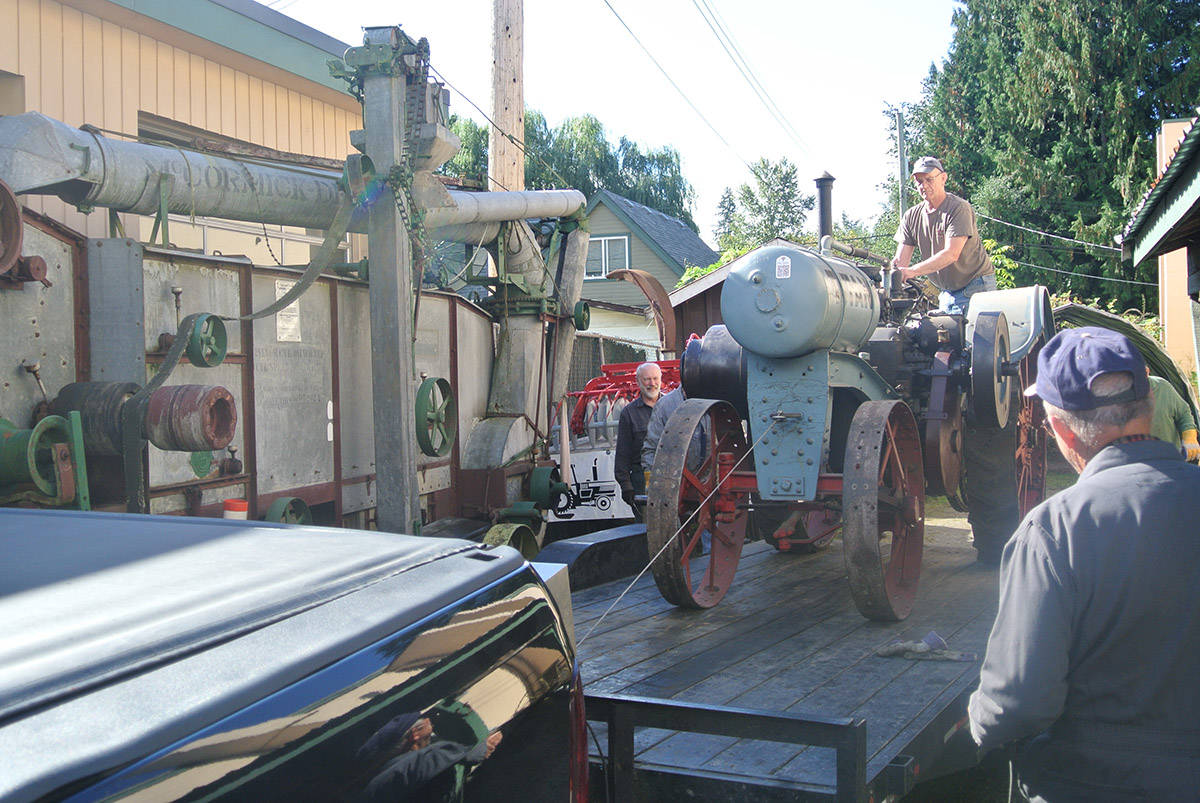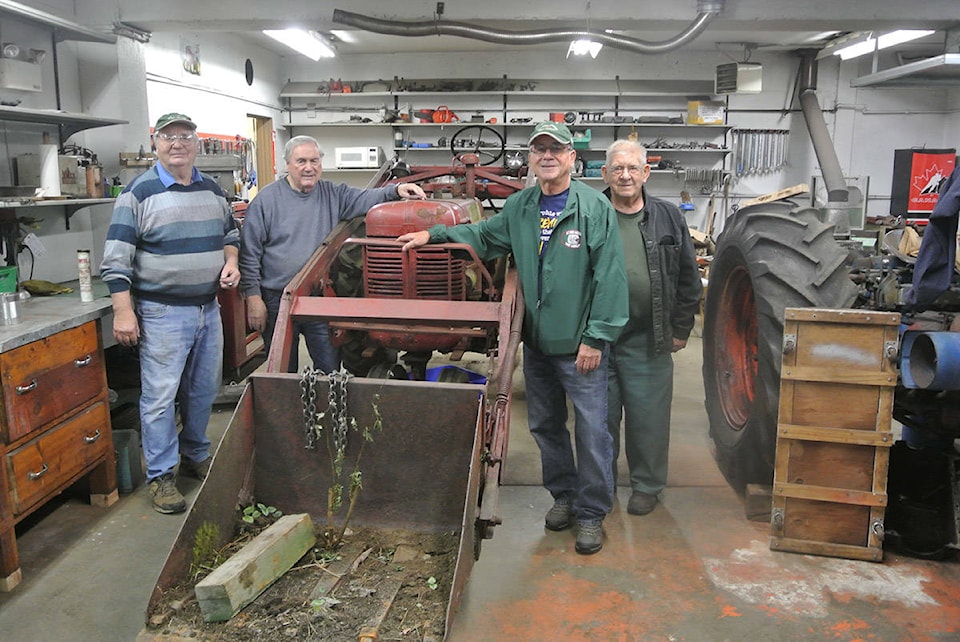Near the end of our local parades you can see them — snorting, chugging, popping and whistling — as the old farm tractors trundle along the street like dinosaurs escaped from time machines.
Along the route grandparents bend down and explain to the children the significance those machines played in our history, you will hear comments like, “It’s hard to believe those old machines are still running,” or “Where in the heck do they find all those things?”
Jim Mair is the current vice president/acting president of the BC Farm Museum Association and he knows first-hand the answers to those questions.
“We are a group of over 120 members with varied knowledge, skills and expertise, who spend many hours at our museum located on King Street in Fort Langley with the purpose of preserving and restoring the history of farm machinery, farming life and pioneer life in B.C.
“We have about 30 active members including 20 to 25 hands-on involved volunteers who spend a considerable amount of time here. That’s our core group who do the managing and operation of the museum and restoration of artifacts. We need more volunteers who still have the knowledge of the equipment.
“We have people who enjoy working with the domestic side of farm life and keep up the kitchen, parlour and textile rooms. Our librarian maintains our extensive collection of books, manuals and magazines and fields enquiries from volunteers and the public. We also have a good collection of early surveying equipment and maps.”
Jim explains that the work plan is designed like a conveyor belt with more than one project on the go at a time.
“By the time we have a project finished and on display we are already working on the next one. It could be rebuilding a carriage that may need someone with carpentry skills or tearing down a tractor that requires someone to pull wrenches and troubleshoot hydraulic or mechanical problems.
“We recently had people working on a mural project for the buildings. We commissioned local artists to produce 36 panels depicting historical farm images, a timeline of agricultural development in B.C., the First Nations original connection to the salmon and the fort, women’s contributions to pioneer life, and individual agricultural fields.
“We received some grant money and we were able to pay for some very detailed art work by seven very talented local artists. The publicity at the unveiling was amazing.”
The artists presented their proposals and one of the long-time volunteers, Past President Syd Pickerell, provided research to keep the details authentic.
“It made the difference between being just a nice painting to being period correct and accurate.
“It is very helpful to have people on board like Syd, who is a retired agrologist. The association treasurer is a retired bookkeeper.”
Jim is a retired structural engineering technologist, has a third class power engineer certificate and lends his expertise to the steam equipment and any structural concerns. Most volunteers have an area of expertise from their “working life.”
Authenticity is a major factor in the restoration of any of the exhibits on display in the museum. The board of directors meets once a month and decides which order our next projects will go in.
There are co-ordinators for various sectors of the museum. Collectively, as a board, they discuss the proposals and vote on which projects will proceed.
Budgeting for the restorations or repairs is always a consideration. Funding for the museum comes from admission fees, donations and some foundation, federal, provincial or municipal grants. We also occasionally supply equipment or artifacts to the movie industry and they pay quite well.
All of the items on display have been donated to the museum. In fact, it was a donation of a piece of equipment that started the collection. On May 23, 1953, Bruce Coleman, on behalf of his family, presented his father’s high cut plow to the University of British Columbia. The plow had won many provincial plowing matches.
Several UBC professors thought it would be good to have a museum at UBC which would preserve the agricultural history of British Columbia. In February, 1958, a meeting was held in the hospitality room of the Fraser Valley Milk Producers Association (FVMPA) Fifth Avenue plant with a group of industry leaders to determine what support the proposal might expect.
A decision was made that evening that notice be given that a British Columbia Farm Machinery Association was being formed with a goal of funding and operating a museum to be located on the Endowment Land on Point Grey.
On June 24, 1958 the British Columbia Farm Machinery Association received a certificate of incorporation. After the association was formed to raise funds for the project, the location was switched to Fort Langley.
The property the Museum Association owned in Fort Langley was needed for the re-construction of River Road so the Township offered a 33-foot lot on King Street in exchange and two adjacent lots were purchased.
The ground breaking ceremony for the BC Farm Museum happened in 1966. The museum was officially opened on Nov. 19, 1966 by Sir Robert Bellinger, Lord Mayor of London and included display space and an archives room.
Within a short period of time, a second building had to be erected to house a growing collection of agricultural artifacts. Phases 2 and 3 were officially opened in 1978 (Phase 3 was the steam room).
Today, they are desperately in need of a Phase 4 expansion for more exhibit space.
The BC Farm Museum is located at 9131 King St. in Fort Langley and is open to the public daily from April 1 until Sept. 30 inclusive.
During the off-season, groups may call the museum to make a reservation for a tour. Or drop by on a Monday between 10 a.m. and 2 p.m., which is when volunteers are on site working on artifacts or exhibits throughout the year.
For information on volunteering call 604-888-2273. Check out the workshop and exhibit rooms at the museum. It just might be where you want to spend some time.

